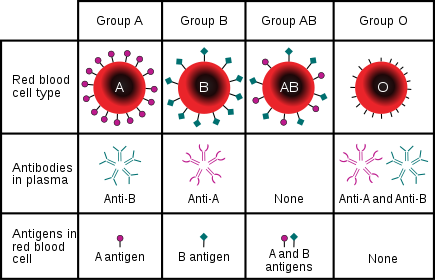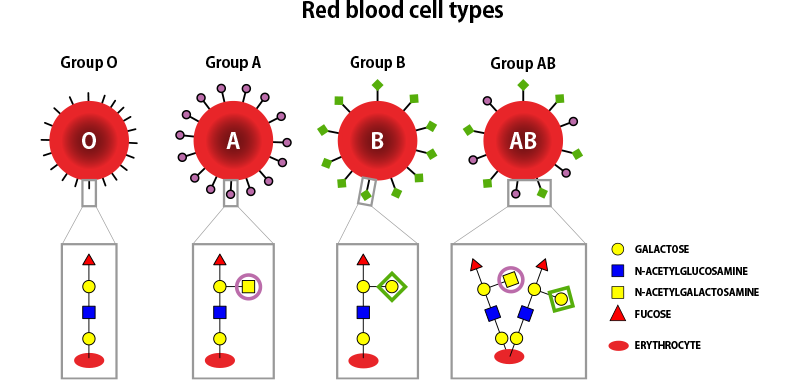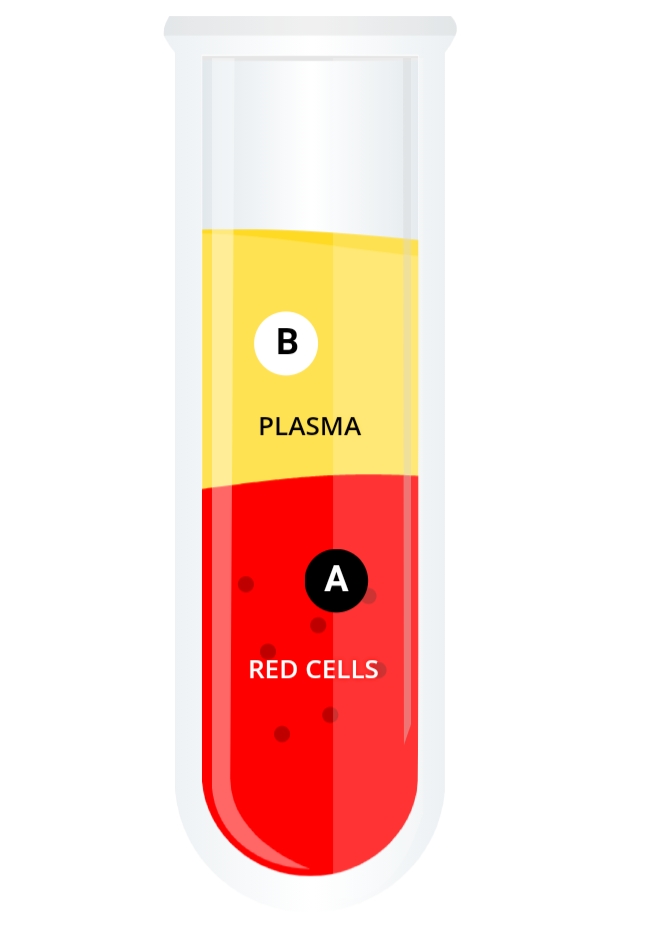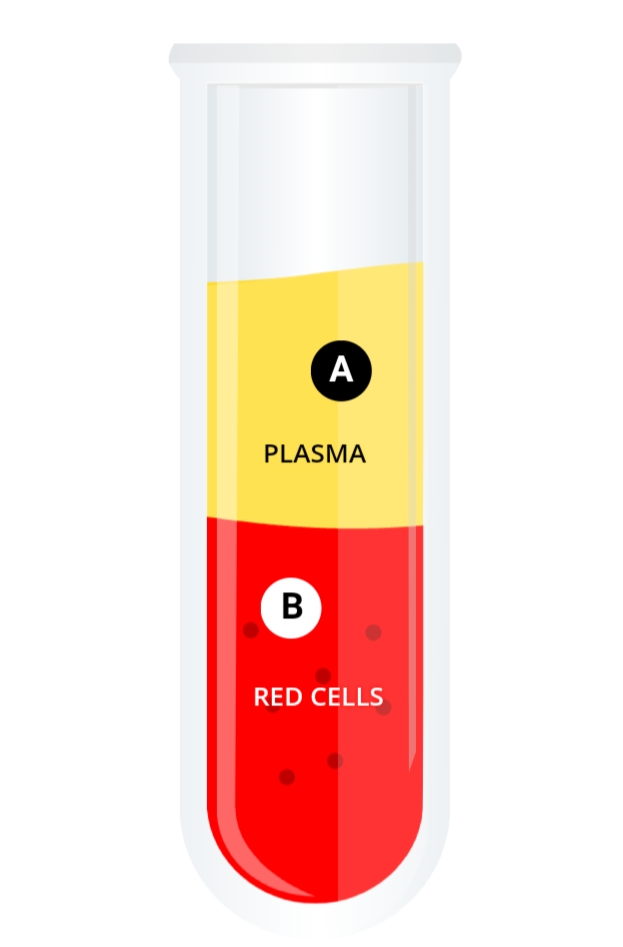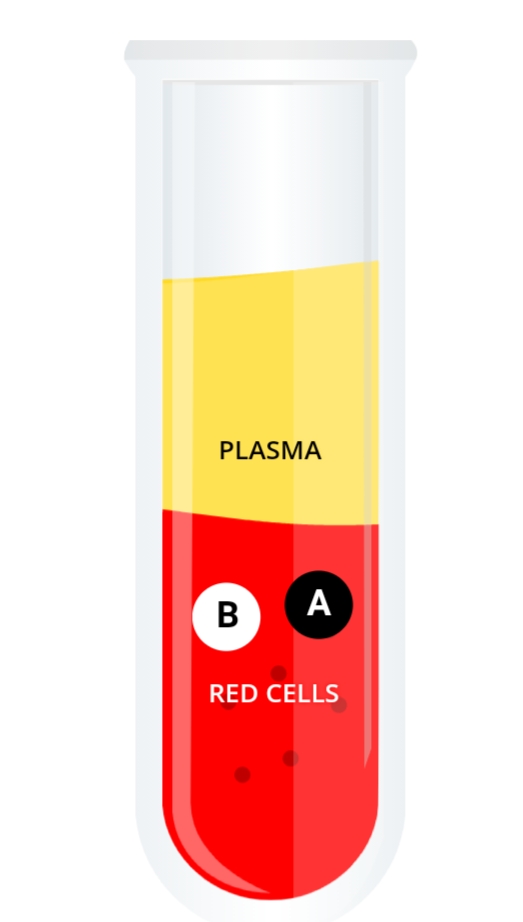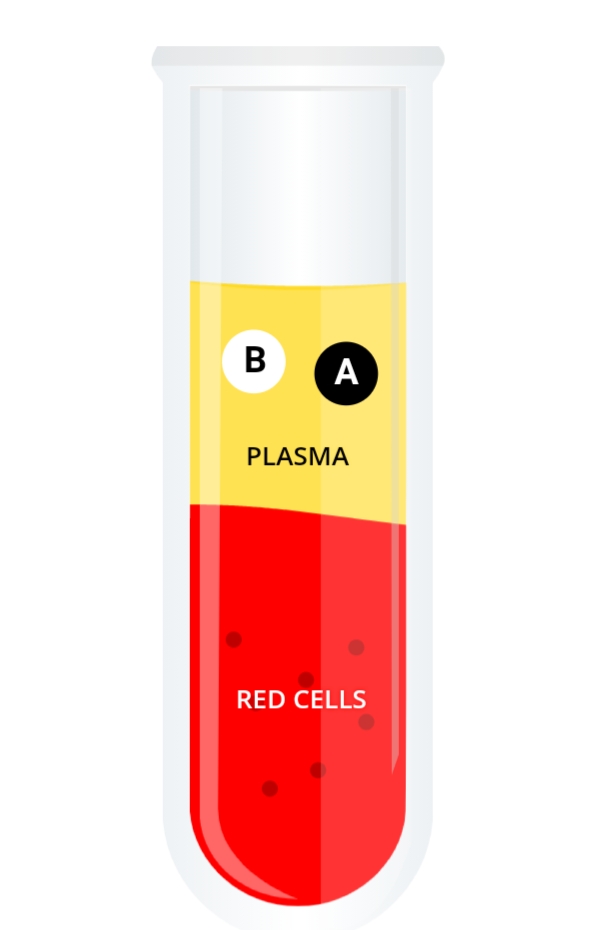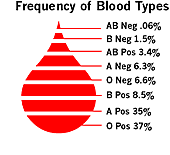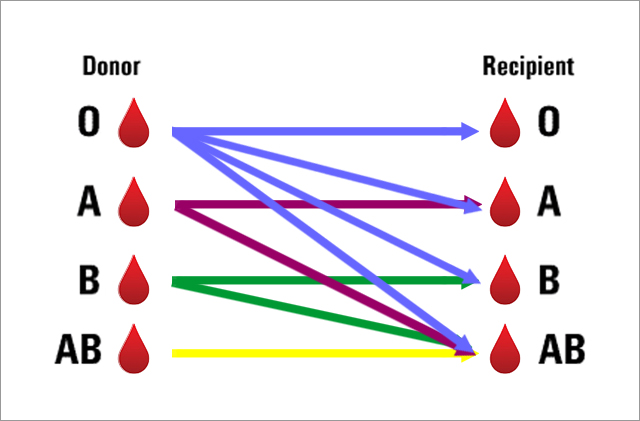Introduction:
Blood, fluid that transports oxygen and nutrients to the cells and carries away carbon dioxide and other waste products. Technically, blood is a transport liquid pumped by the heart (or an equivalent structure) to all parts of the body, after which it is returned to the heart to repeat the process.
blood types are determined by the presence or absence of certain antigens – substances that can trigger a patient’s immune system to attack the transfused blood, safe blood transfusions depend on careful blood typing and cross-matching.
There are four major blood groups determined by the presence or absence of two antigens-A and –B on the surface of red blood cells. In addition to the A and B antigens, there is a protein called the Rh factor, which can be either present (+) or absent (-), creating the 8 most common blood types ( A+, A-, B+, B-, AB+, AB-, O+, O- ).
The ABO Blood Type System
Carbohydrate Antigens on the Surface of Red Blood Cells
Carbohydrate chemistry is of great importance for the most commonly considered blood classification, the ABO blood types. The blood type are named after the antigens that are found on the surface of red blood cells, and these antigens are simple chains of sugars.
The type of oligosaccharide present on the surface of the red blood cells determine a person’s blood type:
If only the O-antigen is present, the blood type is O.
If only the antigen A or B is found, the blood type is A or B, respectively.
If both A and B antigens are present, the blood type is AB .
The A and B antigens differ only in a sidechain on the terminal sugar.
One large role carbohydrates play in cells is in cell-cell recognition. carbohydrates allow specific recognition between cells using relatively small molecules.
One well-known example of cell-cell recognition mediated by carbohydrates is the ABO blood type system. Anybody who has donated or received blood probably knows the following facts about blood compatibility. People with blood type O can receive only O type blood but can donate to any blood type. People with blood type A can receive only A and O type blood but can donate to A and AB recipients. Similarly, people with blood type B can receive only B and O type blood but can donate to B and AB recipients. People with blood type AB can receive any type of blood but can only donate to other AB types. All people synthesize a precursor carbohydrate, called the H antigen, which is attached to lipids or proteins on the outer surface of red blood cells. Specific enzymes synthesized by the ABO genes attach additional monosaccharides to the H antigen, and the completed carbohydrate determines that person’s blood type.
Group A:
Has only the A antigen on the red cells (and B antibody in the plasma)

group A 
group B
Group B:
Has only the B antigen on red cells (and A antibody in the plasma)
Group AB:
Has both A and B antigens on red cells (but neither A nor B antibody in the plasma)

group AB 
group O
Group O:
Has neither A nor b antigens on red cells (both A and B antibody are in the plasma)
Distribution of blood type:
Blood transfusion:
Each year 4.5 million lives are saved by blood transfusions.
There are very specific ways in which blood types must be matched for a safe transfusion. In order to safely perform a blood transfusion, it’s essential that a patient receives a blood type that is compatible with their own. If the blood type is incompatible, the red blood cells can clump together, producing clots that block blood vessels and cause death.
People with Rh-positive blood can receive either positive or negative donations but those who have Rh-negative blood can only receive other Rh negative blood.
The rules for plasma are the reverse:
- The universal red cell donor has type O negative blood.
- The universal plasma donor has type AB blood.
How is my blood type determined?
Its inherited. Like eye color, blood type is passed genetically from your parents. Whether your blood group is type A, B, AB or O is based on the blood types of your mother and father.

